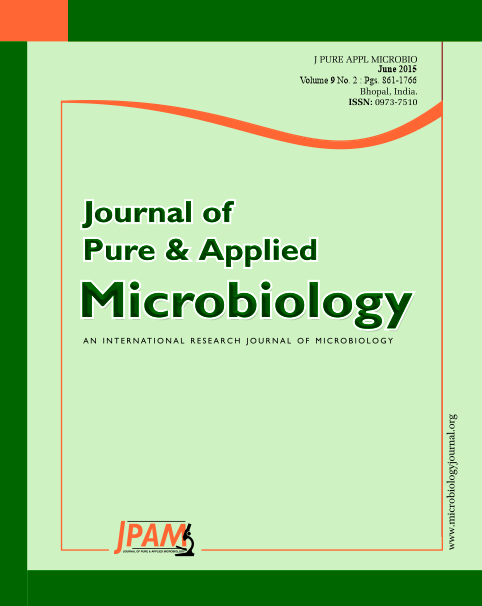Decolorization of Congo red dye was investigated by using dual microbial organism isolated from textile effluent. The effective fungal strain with dye degrading ability was isolated from the effluent treatment plants and was identified as Asperigillus Terreus and Asperigillus Fumigates based on morphological and 16SrDNA sequencing. Analysis for identification of intermediate compounds confirmed the presence of quinone compounds, salicylic acid and catechol, based on this possible pathway for the degradation of dye was proposed. Optimization of temperature, pH, initial concentration of dye and time was investigated by using Response Surface Methodology (RSM). Central Composite Design (CCD) was carried out with 30 experiments, nearly 98.70% of decolorization was observed at 35ÚC, pH 7.0 and at the initial concentration of 500 mg/l in 72 h. The values of R2 = 0.9924, adjusted R2 = 0.9811 and predicted R2 = 0.9961 which reveals that experimental values are in good agreement with predicted values.
Dye degradation, Optimization, Response Surface Methodology, Central Composite Design
© The Author(s) 2015. Open Access. This article is distributed under the terms of the Creative Commons Attribution 4.0 International License which permits unrestricted use, sharing, distribution, and reproduction in any medium, provided you give appropriate credit to the original author(s) and the source, provide a link to the Creative Commons license, and indicate if changes were made.


